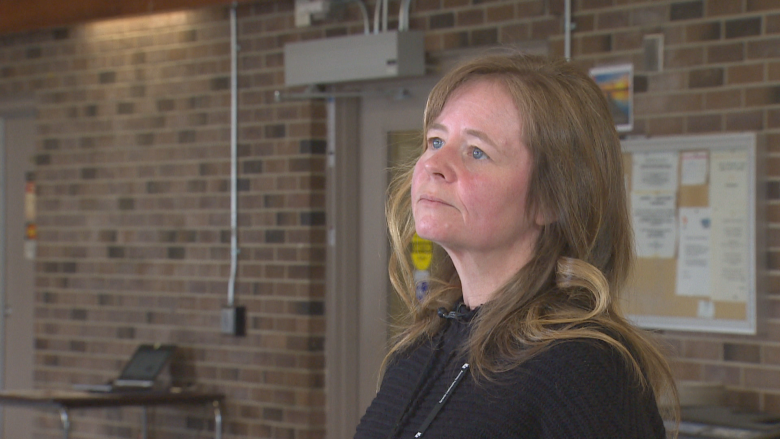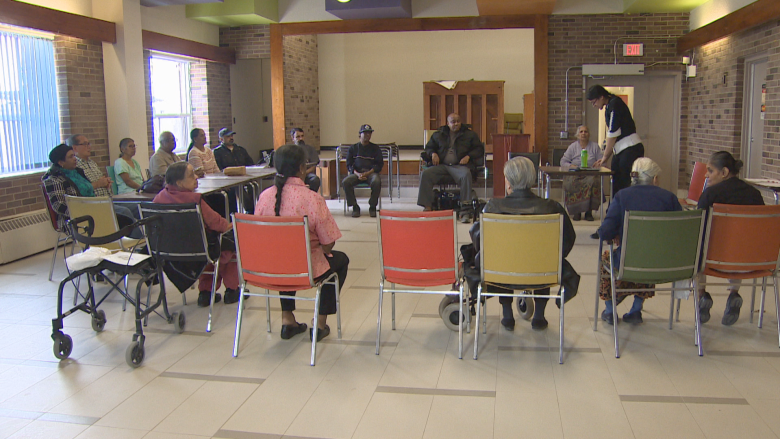How Toronto Paramedics are giving TCH residents 'lots of confidence' about their health
In November, Siva Sivapthanam started feeling pain in her chest. She thought she might've missed her medication that morning.
"I feel my balance … I was about to fall that day."
In reality, Sivapthanam was having a heart attack.
But it wasn't until she got checked out by the paramedics at a new clinic in her own Toronto Community Housing (TCH) building that she found out the news.
"When I checked her vital signs, I noticed she was having some symptoms that could be similar to a heart attack," said Erin Stankevicius, a community paramedic. "So we did a full assessment on her and ended up calling to get a transport ambulance and she was taken to hospital that day."
More than four months later, Sivapthanam is feeling better, but she's thankful she had help nearby in her time of need.
Her building is one of four now offering in-house clinics run by paramedics — the result of a first-of-its-kind partnership between TCH and Toronto Paramedic Services (TPS).
To choose the buildings, the organizations used an innovative piece of technology, unique to Ontario, which tracks where the most 911 calls are coming from in the city.
Tracking 911 calls
Jessie Lee, a community paramedic and systems engineer, created a frequent caller program for TPS after finding huge swaths of vulnerable people in the city have challenges accessing support services.
"There's actually quite a large population of people out there who are not connected with anybody, but are using 911 repeatedly as primary care," Lee said.
Her program looks at how many times each person calls 911 and the reason for each call, then runs the information through an algorithm to predict who will call again in the next three months.
Many of the frequent calls are for general sickness, falls, shortness of breath or chest pain, Lee said — situations that aren't emergencies yet.
"What we wanted to do is look into the data to see if we can locate these people and offer them help before they have numerous medical crises," she said.
This summer, TPS put in a proposal to the Central East Local Health Integration Network (LHIN) to bring community paramedic-led clinics to buildings with a high number of 911 calls.
Using Lee's program and through consultation with TCH, they pinpointed Sivapthanam's building, 50 Tuxedo Ct., and 10 Glen Everest Rd., both in Scarborough.
They started clinics at those buildings in November, and in the last few weeks, expanded to 30 and 40 Gordonridge Pl., also in Scarborough.
How it works
"It's the first time we've had the opportunity to do this," said Michael Roffey, superintendent of the Community Paramedic Unit.
"It's unique to Toronto."
He and his team of six community paramedics set up their clinics in open areas of each building for four hours each week.
Residents receive a clinical assessment for things like blood pressure, heart rate and blood sugar, as well as a quality-of-life assessment, which looks at mobility, pain, anxiety and depression.
They'll keep records of each resident, and they'll also refer residents to other support services such as Meals on Wheels, Wheeltrans or home-care if they feel it's necessary.
"Hopefully, we'll see a decrease in 911 calls, but we're also just looking at the general well-being of these clients. We want to make sure that they have the services that they need to be supported here in their own home," Roffey said.
Workers with Cota and Hong Fook Mental Health Association are also on-site for referrals.
Sheila McGregor, the Community Service co-ordinator for Access and Support with TCH, said 50 Tuxedo Ct. houses a lot of people living alone, formerly homeless youth and seniors with mobility issues.
"There's also a lot of people that don't have doctors, they're looking for some support," McGregor said. "When they come here … they come to learn that they have something significant going on with their health."
Ratneswary Sanmuganathan, 81, has used the program at Tuxedo Ct. since it began.
She's lived in the building for more than 20 years and said before this program, residents wouldn't seek the help they needed.
"We just wait; if something becomes acute we go to the family doctor. Other than that ... we just bear the pain and wait at home," she said.
Yes, it gives us lots of confidence. When we come here we're able to get the accurate readings for these things ... and we are happy."
911 calls from clinic sites on the decline
After only five months since the first clinic started, paramedics say they are already seeing results, both in residents' quality of life and in the number of 911 calls they're receiving.
In 2016, they had 11,151 frequent callers, and in 2017, they had 12,633. Although the number of calls went up — something they attribute to the city's aging population — they say the numbers are below what they projected.
Paramedics also compared the number of 911 calls they received six months prior to a home visit and six months after. Those numbers went from 9.2 calls to 6.6 calls, a 28 per cent decrease.
These declines are one factor Roffey will be using to assess whether the community paramedicine programs are a success.
He's currently speaking with other LHIN's across the city about expanding the programs, something Lee would love to see.
"In a way, excessive use, or frequent use of 911 is a cry for help, and this program is trying to answer that call."









